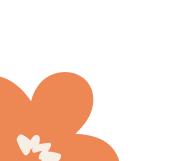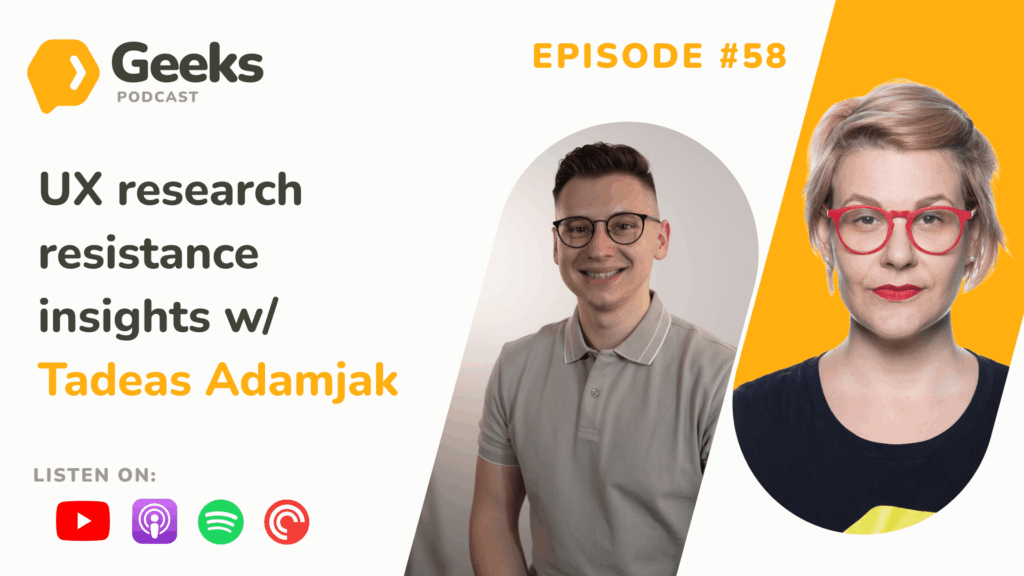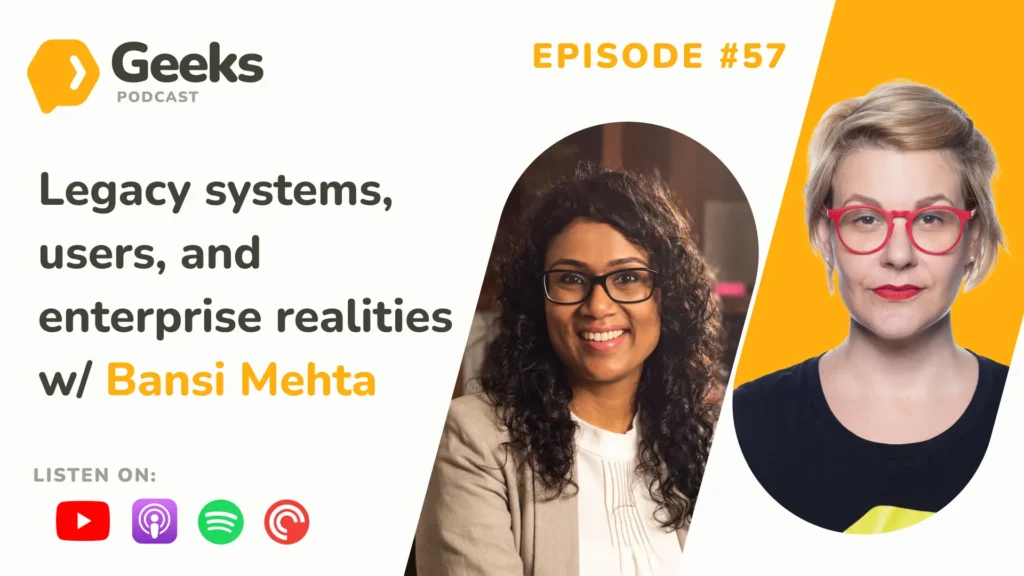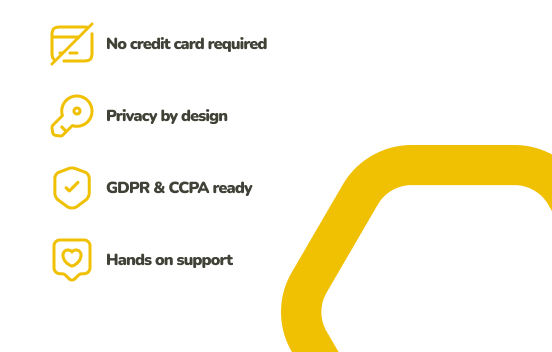Episode highlights
00:02:09 – Inclusive design approach and philosophy
00:01:32 – Motivation for inclusive design
00:05:57 – The Xbox adaptive controller
00:08:38 – AI and accessibility
00:10:51 – Participatory design and research
00:19:16 – Advice for researchers
About our guest
Bryce is an inclusive designer for Microsoft Windows + Devices where he is devoted to ensuring Microsoft products are accessible.
Bryce initiated and designed the Inclusive Tech Lab at Microsoft, which has now hosted over twenty thousand visitors; it is a facility where people can explore how people with disabilities interact with Microsoft products and services.
He strives to design systems of accessibility enhancement, like the Surface Adaptive Kit, across our devices. Bryce is one of the inventors of the Xbox Adaptive Controller and a proud member of the Microsoft Adaptive Accessories team.
Podcast transcript
[00:00:00] Tina Ličková: Welcome to UXR Geeks, where we geek out with researchers from all around the world and topics they’re passionate about. I’m your host Tina, a researcher and a product manager, and this podcast is brought to you by UXtweak, the UX research platform for recruiting, conducting, analyzing, and sharing insights all in one place.
This is UXR Geeks, and you’re listening to a conversation that I had with Bryce who is an inclusive designer working for Xbox in the last 10 years, and I don’t wanna spoil too much, but there are some very humbling moments for researchers. I think Bryce is bringing a lot of experiences and I’m looking forward to seeing him on UXcon Vienna in October where he will be talking about accessibility in hardware, which also may have some very important points on anybody’s practice.
Hello, Bryce. Hi. For those of our listeners who don’t know you, who are not as much in the accessibility topic as you are, who are you? What do you do?
[00:01:21] Bryce Johnson: My name’s Bryce Johnson. I’m an inclusive designer here at Microsoft and one of the. Co-founders of what we would call the inclusive tech lab. I’ve spent the past 30 years as a designer, but really the past decade I’ve focused a hundred percent of my time on serving people with disabilities and designing products and solutions for people with disabilities.
A lot of people might work in accessibility and have to, you know, think about how people with disabilities interact with their products or use assistive technology. I make assistive technology. I think that’s kind of the differentiator there.
[00:01:56] Tina Ličková: Beautiful. Beautiful. Especially as a sister of a deaf brother, I feel like this is something that I’m deeply interested in.
When we were talking. About what we are going to talk about in this episode. You were telling me inclusive design is not so much about design or not about research, but it’s inherently more about research and design. Could you maybe explicate on that one because I thought it’s a very interesting thought.
[00:02:23] Bryce Johnson: Over my career, I’ve held both designer titles and research titles and. I must admit, I don’t take either of them too seriously, but at the same time, I take them both very seriously. The thing about inclusive design that I think is, is vital to recognize is that there is no inclusive design without working with the people that you’re designing for, right?
You cannot really go ahead and invent something. I mean, you could, lots of people do actually, but I wouldn’t call it inclusive design. Lots of people go, I think I can fix deaf people. You said your, your brother is deaf. There’s lots of solutions out there where people try to fix the problem and that’s the way forward.
The way that I practiced for many years is to include people with disabilities and stakeholders in the project, and that’s, you know, easy to say, harder to do, but we try our best. That’s why we have the facility that we have and, and the practice that we do.
[00:03:23] Tina Ličková: Before we go into the practice, I am always very interested. Where does the motivation come from for marginalized, disabled people in your life?
[00:03:34] Bryce Johnson: It’s funny, you know, I think people always ask me this and they expect me to have a, like an origin story like you might have with your brother, but I really don’t. It just always kind of made sense. I mean, why wouldn’t we want the things that we make?
To be useful by as many people as possible, right? Like, why I don’t think anyone in design gets outta bed and goes, you know, I’m gonna design for just this narrow group of users today. I mean, I think the reality is, is that sometimes that kind of happens. Scoping is important and things like that, but it’s hard to imagine a designer that’s motivated by exclusivity. You know?
[00:04:11] Tina Ličková: I would a little bit argue, especially when seeing. Designer slash technological people who sometimes just really tackle the problems of themselves and nobody else forget about anybody else. Another maybe origin story thing is I’m not a gamer, and this is an episode maybe for non-gamers as well, but how did it became that you were coming or and telling, okay, we have to design Xbox for disabled, and how did it become a thing in a product that is adjusted to a need?
[00:04:46] Bryce Johnson: I wouldn’t mind circling back on that whole, when you say that people do exclude, I think it’s inadvertently exclude. Mm-hmm. You know, I want to give people credit when we talk about bias, you know, we use this word bias a lot.
[00:04:59] Tina Ličková: Yeah.
[00:05:00] Bryce Johnson: We’ve written sayings like, well, you know, you were basically faulting people for relying on their own experiences and knowledge, which isn’t fair.
In a lot of ways, like I will say that, you know, having done this a long time, I’ve learned to forgive a lot of people for their inability to kind of like project beyond their own needs. Right? So I do think that people who, who feel like they can make something and have it work for everyone. I don’t wanna fault their motivation, but I do think we can fault their methods.
Right. And that’s kind of where it comes back to this thing that we talked about in the beginning where there is no like inclusive design without people with disabilities. You now have a great idea on how to do something. But until that idea like interacts with the world, it’s not, it’s not anything really, you know?
So I think that’s, that’s really interesting for us. Like to kind of bring it back to your question about Xbox. Like that’s where we were at for a really long time with Xbox. So I think like when it comes to not being able to recognize when you’re excluding people, if you think about a regular game controller and I’m holding up an Xbox controller, and you think about how design evolves over time, and game controllers is a really actually good example.
If you’re old enough to remember when the game controllers were like, either just a joystick in one button or you know, maybe a dpad in two buttons, like with a Nintendo. You know, you’ve seen how they evolved and you’ve seen the ergonomics involved, um, in getting more and more functions in a very ergonomic and efficient way around a pair of hands.
But the problem is, is that they were optimized for a typical pair of hands. And if you did not have a typical pair of hands or the ability to use your hands in a typical way, we inadvertently in gaming, like marginalized you. And that’s one of the things that, you know, I know Mike Montero said this, and I, I always try to give him credit for it.
’cause I really like it. As designers, no one is marginalized, no one is on the edge, right? People don’t exist in margins. People exist where they exist as designers who make products, we set the center. So we set the center of a design and therefore people flow out from that center. So if you’ve set the center to a group of people, you’ve also set the people who are on the margins, right?
So that optimization can be really tricky. So how do you approach a design problem from multiple spaces so that the center can either be wider or there’s multiple centers? You think about a lot of these things. And so that’s what we did with the adaptive controller. When our engineering team was tackling the problem, they asked a very good engineering question, which is, what is the primary use case of this device?
’cause people couldn’t get it back in the day. They had a hard time wrapping their head around it. And it wasn’t until we said, well, the primary use case of a game controller is the standard controller. What became the Xbox Adaptive Controller was meant to address the alternate use cases, the not primary use cases.
I think for me one of the most interesting things about this type of design is, is golden paths, right? Designers, we always love to like design this flow where everything just works out perfectly, right? And we always strive to give people that perfect flow. But recovering from error and recovering from when things don’t go right is in many ways where it’s more important, just as important than the regular flow.
I like to tease my colleagues who work in AI right now and, and we all work in ai. We’re at Microsoft, we all work in ai, but a lot of the use cases that we see for AI are things that make your life a little bit more convenient, right? Like, oh, I can book a trip, or I can bake a cake and. You know, I can get directions on how to do this.
They weren’t impossible before, but we’re not really looking at the things that were impossible when it comes to ai. And I think that’s where people with disabilities are. It’s gonna be wild, right? You know, we’re gonna enable things that were impossible for someone with a disability to do. That’s really exciting.
[00:09:19] Tina Ličková: We’ll be right back after this quick important message.
If you’re enjoying this conversation with Bryce, I’ve got some exciting news for you this year. You can see him live at UXcon Vienna, Europe’s friendliest UX research and design conference taking place from October the sixth till the eighth. Think of three days, 600 UX professionals from over 40 countries, and inspiring talks from leaders in the field including Laura Herman, head of AI research at Adobe, Rena Reed, director of UX Design Research at LinkedIn, and some our guests, including Bryce.
You also meet experts shaping experiences at Ikea, Instagram, Tolando, and many others. We are also proud to share that UXtweak, the producer of UXR Geeks, is one of the partners, so stop by at the UXtweak stand.
We’d love to connect, exchange ideas and talk all things UX research. You meet me there as well. And if you’re ready for learning networking of Viana Magic, grab your ticket to the conference@uxcon.io and you can use a special discount code “uxtweakatuxcon” to get 10% of your conference passes. See you there.
You are also mentioning, and this is where I am really curious because I hear it a lot and I just had a recording with Amanda and we were talking about participatory research where people come in research. So you are not researching on people, but you are researching with people. And I’m wondering how that’s sounds for you in your practice and how do you actually do it?
Because not many of us, especially I, can imagine our audiences are scattered around the world. Not everybody had the opportunity to research on a piece of hardware. That’s first thing. And not for such a company who has the resources, for example, to do maybe a better job in recruitment.
[00:11:31] Bryce Johnson: It’s easy to imagine these unlimited resources, which for the big projects, I think that’s very true.
But you know. The biggest challenge that we have in our work is convincing people that the problem that we’ve identified is a problem, right? That’s the trickiest part. A lot of times designers don’t have to spend as much time on the who and why. As I do, they get to jump to the what and how because the who and why tend to be a bit more apparent, right?
Like, I can’t do this. This is hard. I think a lot of times that’s, that’s really true. We have to spend a lot of time on the. The who and and why. And you know, we do that with our stakeholders. But the other part of it that’s been very important for us in our practice, but at the same time can can be a double-edged sword, is that we hire people with disabilities to our teams.
Right, right. You know, like that’s super important. You know, and we try to prioritize that. So we do hire people who have that experience to our teams. It’s very important, when I say it’s a double-edged sword, is that sometimes, you know, empathy is a strange thing, right? You always try to conceptualize someone else’s problems.
Let me put it this way, I am a middle aged white guy who makes a decent salary. You know, there are a lot of things that I cannot empathize with. Like at all. And if I try to, and I try to put them in context in of my life, things get lost, right? And so just sort of recognizing that empathy in a traditional sense is not enough.
We do have to engage people. And you know, it’s funny you say participatory research. You know, we would call it participatory design. Um, you know, by, like, we have people with disabilities on the team, so we have people with disabilities on the team. We bring in people with disabilities very early in the ideation phases to help us design the product.
And to continue to work on that. I will say that that is both humbling and it’s a very tricky thing. ’cause another sort of aspect of this that I have seen out there in the world, just to kind of present a a couple sides to this flow is that you will have designers or researchers that have spent a whole career in a certain domain and maybe not.
Had a lot of interaction with people with disabilities, so they’re uncomfortable, they’re nervous, they don’t wanna say something wrong, they don’t wanna do something wrong, so then they meet one person with disabilities and that person gives them some insight, and it’s such a new way of thinking that the professional immediately attaches themselves to the idea of this person with disabilities without.
Necessarily recognizing that that person is not a researcher or a designer. You can’t absolve yourself of the responsibility of designing a solution because someone with a disability told you this is what they wanted. You know, we would never in product making take the opinion of one person and try to apply it universally.
Yet, I think it happens a lot in inclusive design, and it happens from a place. Of trying to do the right thing so it doesn’t happen from a place of malice. Now it does always come back to, you know, there needs to be some guardrails. In the work we need to identify these problems. Which is funny because I am the one that if anyone biases research studies by leading the witness when it comes to an interview in a user research review, it’s, it’s probably me.
[00:15:10] Tina Ličková: I think we or I’ll. Guilty and, and it’s, it’s, it’s good that you are aware, but to your point, I think you’re bringing very important aspect. People who are living or are close to disabled people can see a lot and disabled people, they have it on daily basis. There is a really big difference between empathy, compassion, and pity.
[00:15:35] Bryce Johnson: Totally. A hundred percent.
[00:15:36] Tina Ličková: No, and the pity comms, it’s really driving things and situation into corners that you just don’t wanna end up there. And I like that you’re emphasizing it because then the product based on one opinion of one disabled person is really the same thing as you would place another product on one opinion of one person.
Is there. When I jump right now into UXcon Vienna, is there anything that you think people who are interested in accessibility and inclusive design will get in your speech? Or let’s make it a simple question, what should be their motivation to come to your talk?
[00:16:20] Bryce Johnson: So my talk is gonna be basically about the motivation. You know, I, I spend most of my career in software design, and you can do anything in software. And what I mean by that is like there is an old sort of software joke, which is that if a software engineer tells you something’s impossible, what they’re really telling you is that they don’t have enough time because nothing’s impossible in software, right?
But when I switched from software to hardware, you know, I had to learn a lesson. Sometimes a mechanical engineer tells you something’s impossible, and they mean physics, they mean impossible, right? So you do have to kind of learn that. So the way that we think about accessibility and the work that we do and the material I’m gonna be presenting is on how we think about accessibility in a hardware kind of space, right?
We like to talk about the fact that all accessibility really is, is personalization that accounts for human diversity. You know, if I can personalize something and it accounts for human diversity, it, it can be made accessible. The thing about hardware that I think is really tricky. Is that we’re so used to this idea of a product coming from a retailer, and I open the box and I take it out and I use it.
And if it doesn’t work exactly as I imagined it working for me, I put it back in the box and I send it back to the retailer and I kind of call it a day. We don’t engage, especially like I think in consumer electronics. We expect them to kind of work in a certain way, and when they don’t meet our expectations, we don’t go forward.
And that’s completely understandable. That’s human behavior. Our consumer culture has kind of driven us to that a little bit. So how do we start to think the same way about consumer electronics that we might think about like clothing? Right. Like I don’t wear the same outfit. I don’t have a work outfit and a play outfit.
I have these outfits and pieces of clothing that I put together that I accessorize. I wear like one thing with something else, depending on my mood. How do we think about that with hardware as wow. Like, you know, we all have activities now as, as sort of professionals where we do some things on our phone always, and we do some things on our computer always.
And when you try to have to do one thing on something else, it’s a little bit of a mental leap for you. It’s not impossible, but sometimes you have to do it. And so what I mean by this is that this is all about convenience for typical people and, and preference and all that stuff. But when it comes to the disabled, those little differences can mean the, the ability to access and the ability not to access, right.
The ability to participate. You know, we had, um, an advisor that. Worked with us. Her name was Susan Goldsman. She’s no longer with us, but she worked on inclusive parks in the San Francisco Bay area, and she talked a lot about how inclusion is not one size fits all. Inclusion is finding a way to participate and having multiple ways to participate, and that’s where we draw a lot of inspiration from in our practic.
[00:19:17] Tina Ličková: Is there anything that you would advise to our audience, researchers, product managers, designers, if they wanna start or embrace inclusive design practice in their organizations?
[00:19:33] Bryce Johnson: Yeah. Hang out with disabled people. I mean, hey, I know that sounds silly, but like I’ve taught classes where students have come up and they’ve been really interested in the work and I’m like.
So who do you know that’s disabled? And they’re like, oh, I don’t know anybody that’s disabled. And I’m like, oh, well I think I figured out your problem. I’m not really a rules guy. I’m not really a prescriptive kind of person, but the one thing that I never sort of bend on is there is no inclusive design without interacting with disabled people.
[00:20:03] Tina Ličková: Mm-hmm.
[00:20:03] Bryce Johnson: Right? Like that’s just the way it is. Other than that, there’s a whole bunch of things that you can kind of do. One of the things that I’ve been working on in my practice right now. Is, it’s really easy for us in tech, and I don’t know if you can apply this to your own work. The people that that tend to want to interact with us are people that are also interested in tech.
So the people that sign up for a usability study. Have a bias in that they want to do a usability study. I think in a lot of ways, like there’s at least some motivation there that that’s something that interests them and that they would be willing to do. So I’ve been really trying to go to disabled communities that are not technical at all and be the tech.
Yeah. And most of the time I show up there and people go, why are you here? And I’m like, yeah, good question. Like, I’m just gonna hang out and understand how you do things. ’cause tech is in all of our lives. It’s not, not So when I say tech, it can mean a lot of things. Yeah. Um, any sort of technology, you know, we still think a lot about things that aren’t digital.
We still think about a lot of fiscal things as well.
[00:21:11] Tina Ličková: Yeah. I would have like at a hundred questions, I guess exactly about this, how to recruit.
[00:21:17] Bryce Johnson: This is where like I get into fights with UXR folks, right? Like, okay, I don’t recruit. I am part of the community, the scientific, you are the subject, and I am like nope, don’t do that.
I don’t do that at all. This is where like I lose a lot of the UXR people. Like that scientific separation. I am not having it.
[00:21:37] Tina Ličková: You are definitely not losing me on that point because I think it’s a great point. We being apart and also having some relationships with the people and not just like, oh, you, you and you and we screened you, but being there and living.
The experience. Yeah, I applaud that. But what I wanted to say, I would have questions and I maybe will annoy you at the conference with them. Great. And I hope people will come to UXcon Vienna and see you because I think it’s worth it to see your presentation, and thank you for your time.
[00:22:11] Bryce Johnson: Yeah, thank you. Thanks for talking. Bye-bye.
[00:22:17] Tina Ličková: Thank you for listening to UXR Geeks. If you enjoyed this episode, please follow our podcast and share it with your friends and colleagues. Your support is really what keeps us going.
If you have any tips on fantastic speakers from across the globe, feedback, or any questions, we would love to hear from you, so reach out to geekspodcast@uxtweak.com.
Special thanks goes to my colleagues, to our podcast producer, Ekaterina Novikova, our social media specialist, Daria Krasovskaya, and our audio specialist, Melissa Danisova.
And to all of you, thank you for tuning in.
💡 This podcast was brought to you by UXtweak, an all-in-one UX research tool.
















